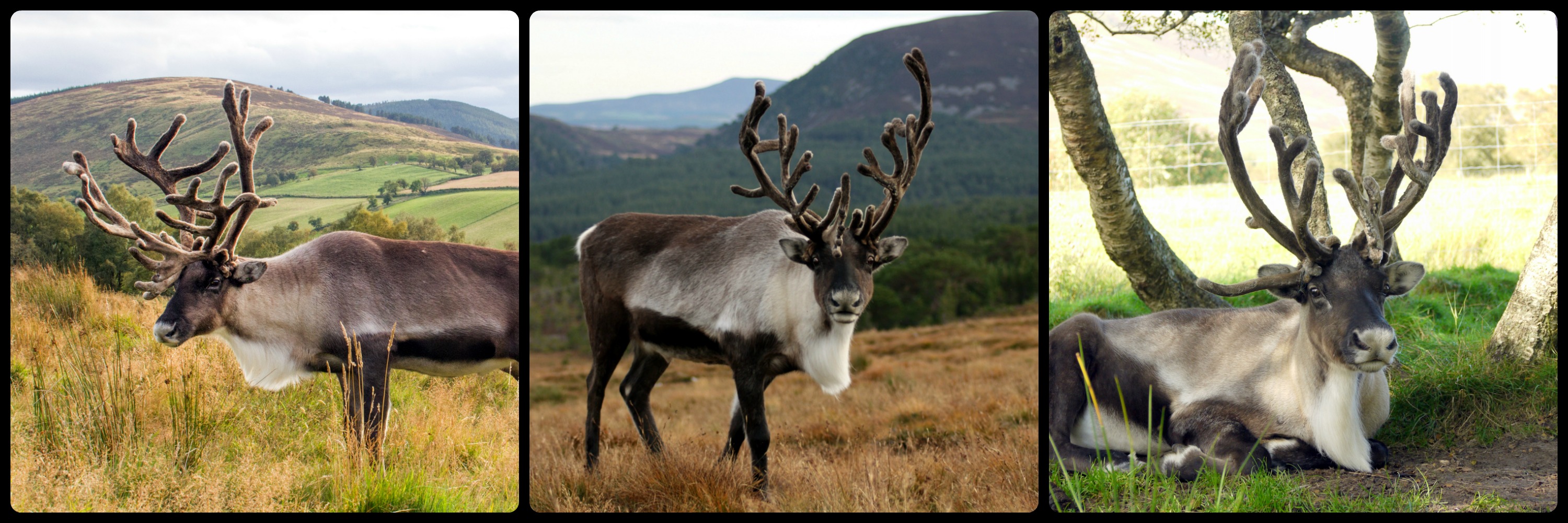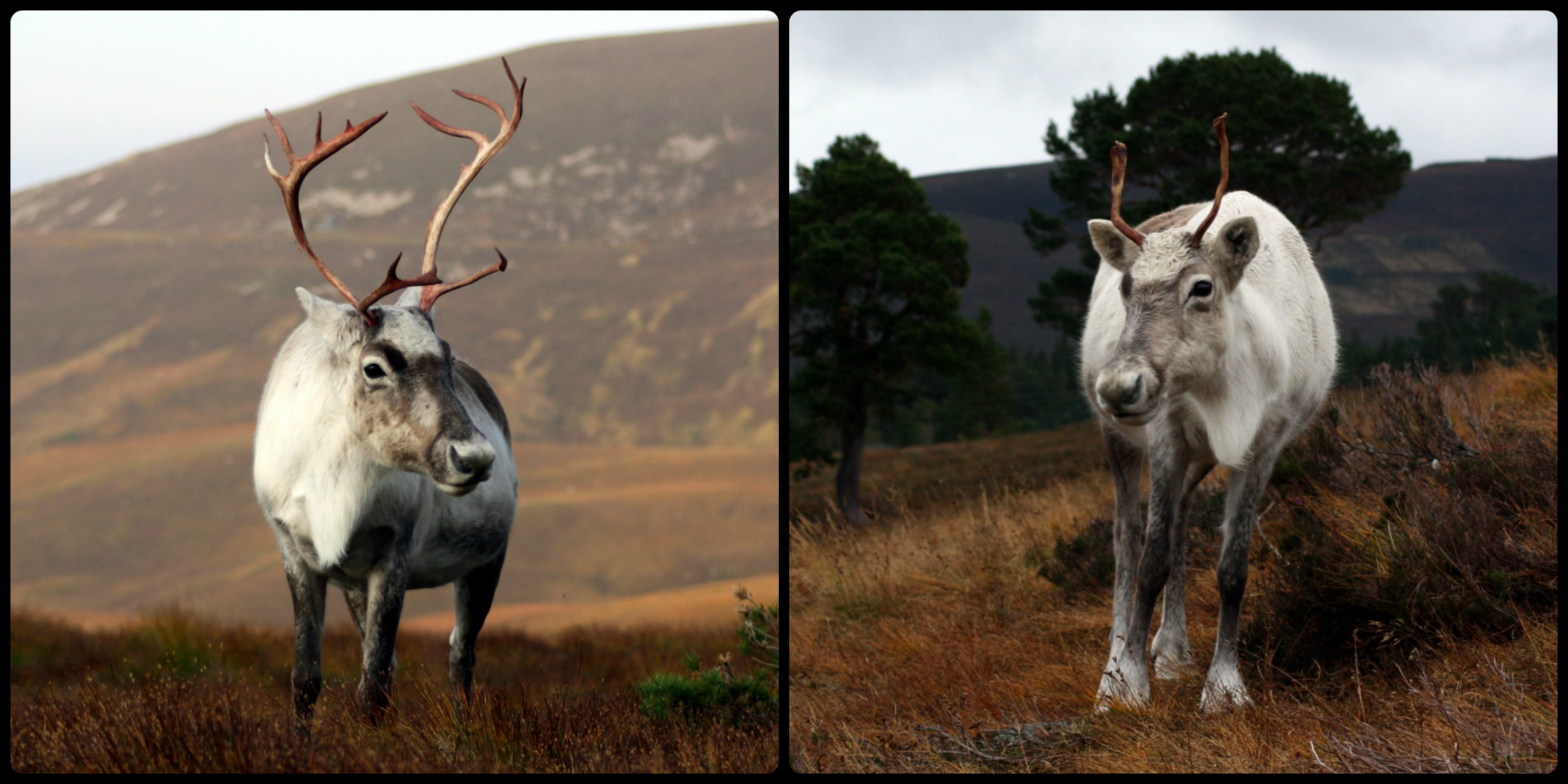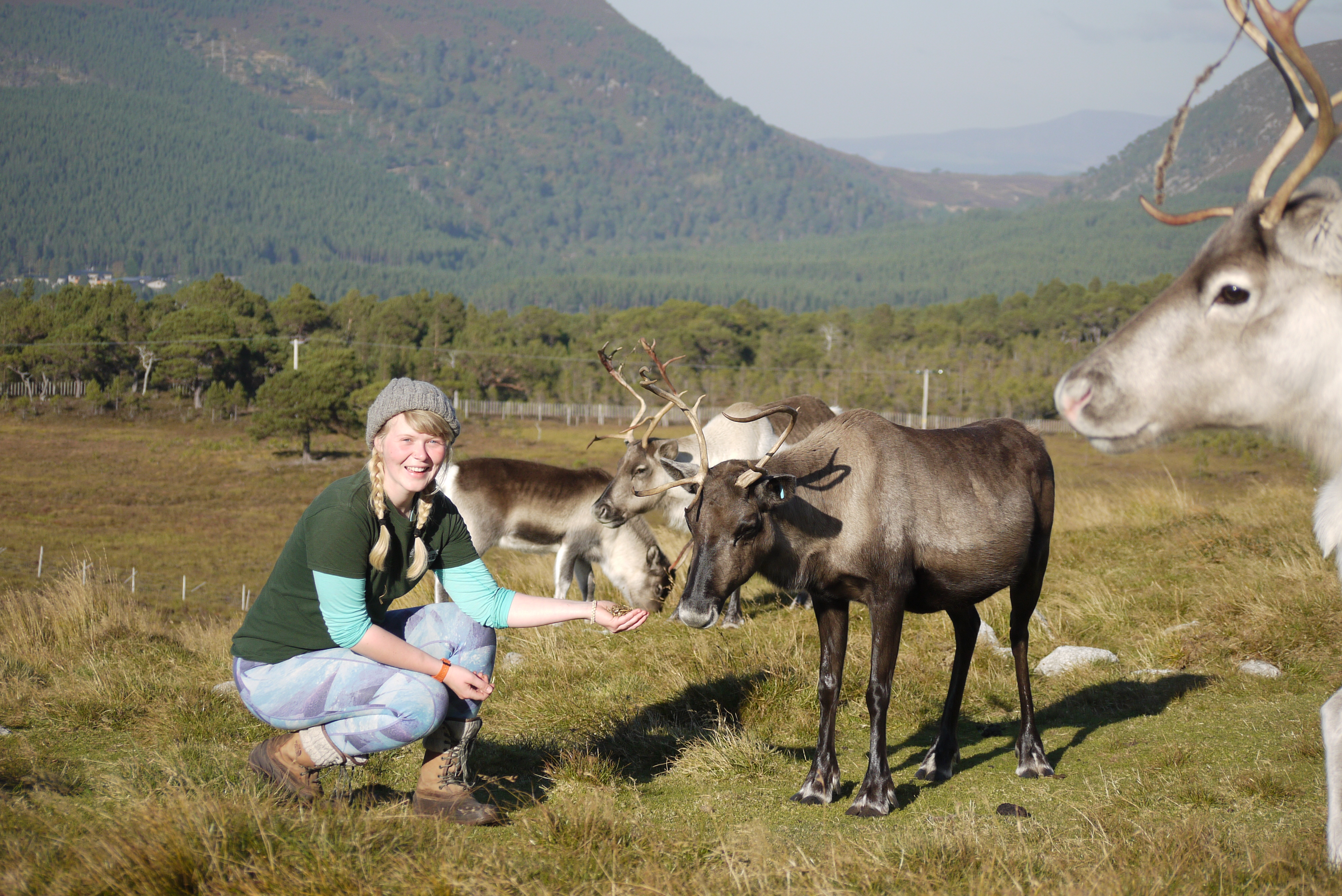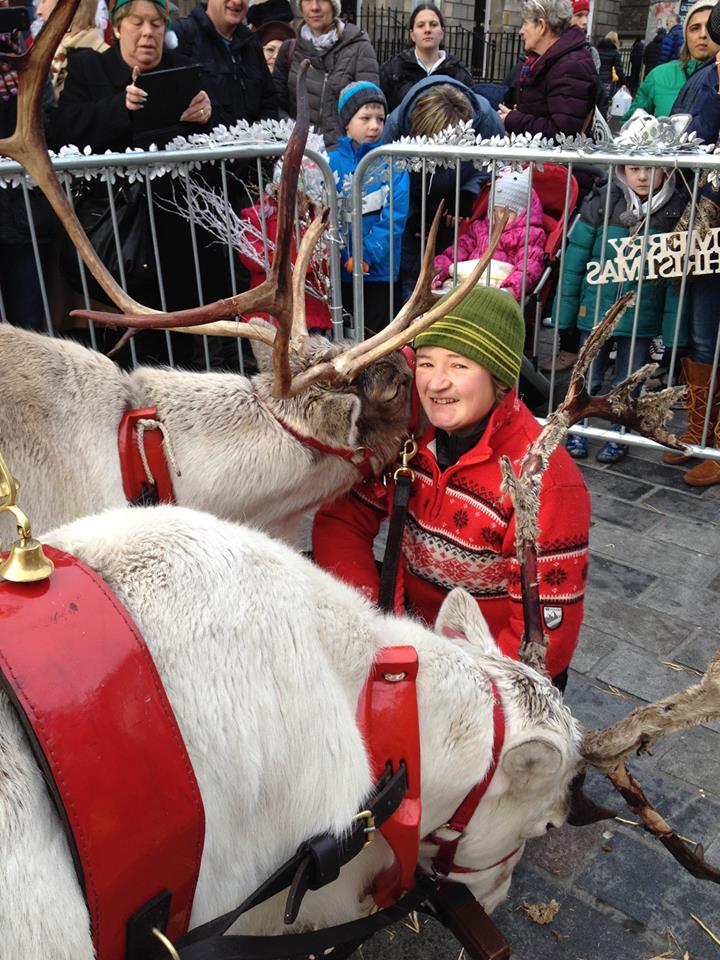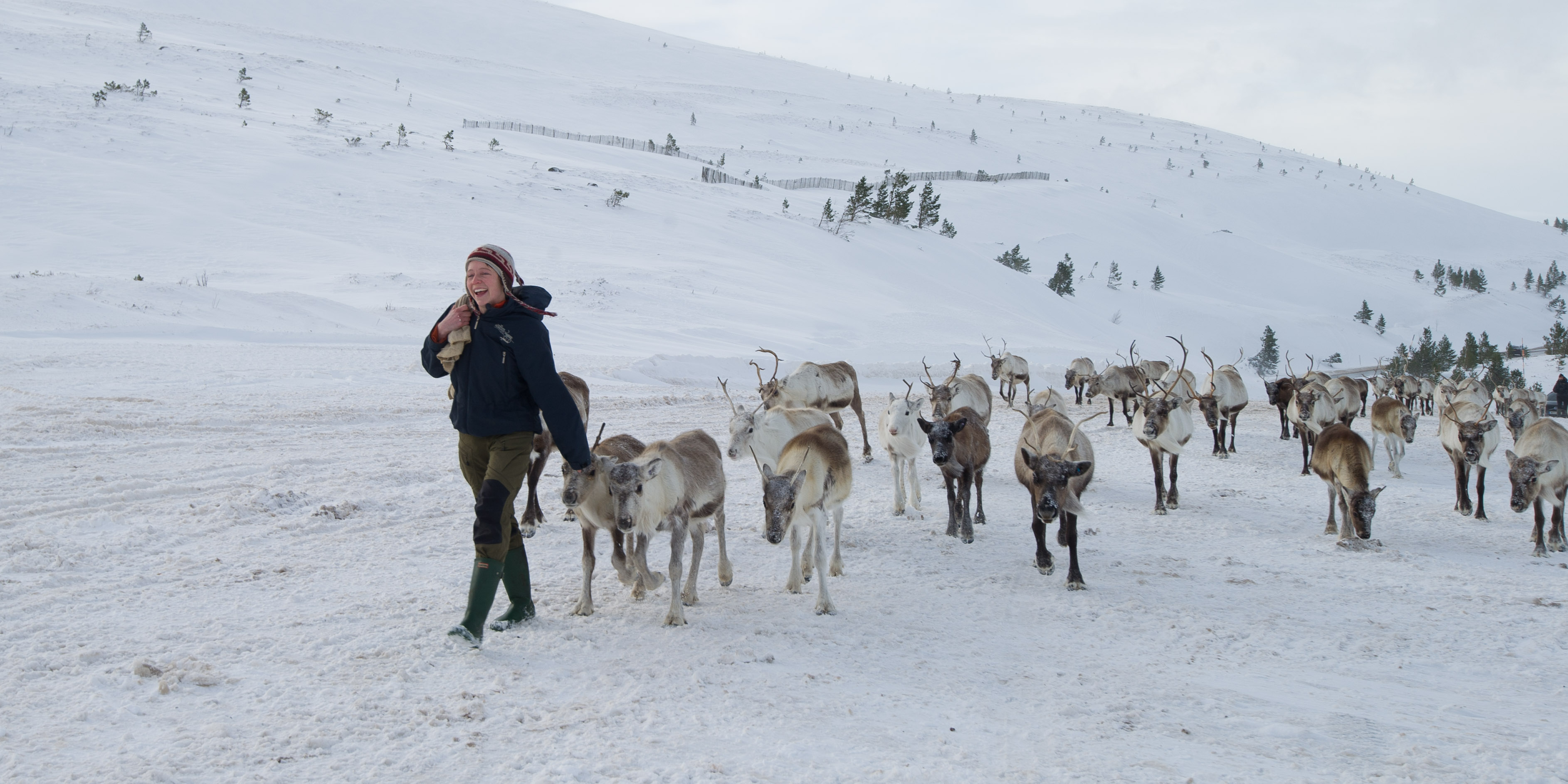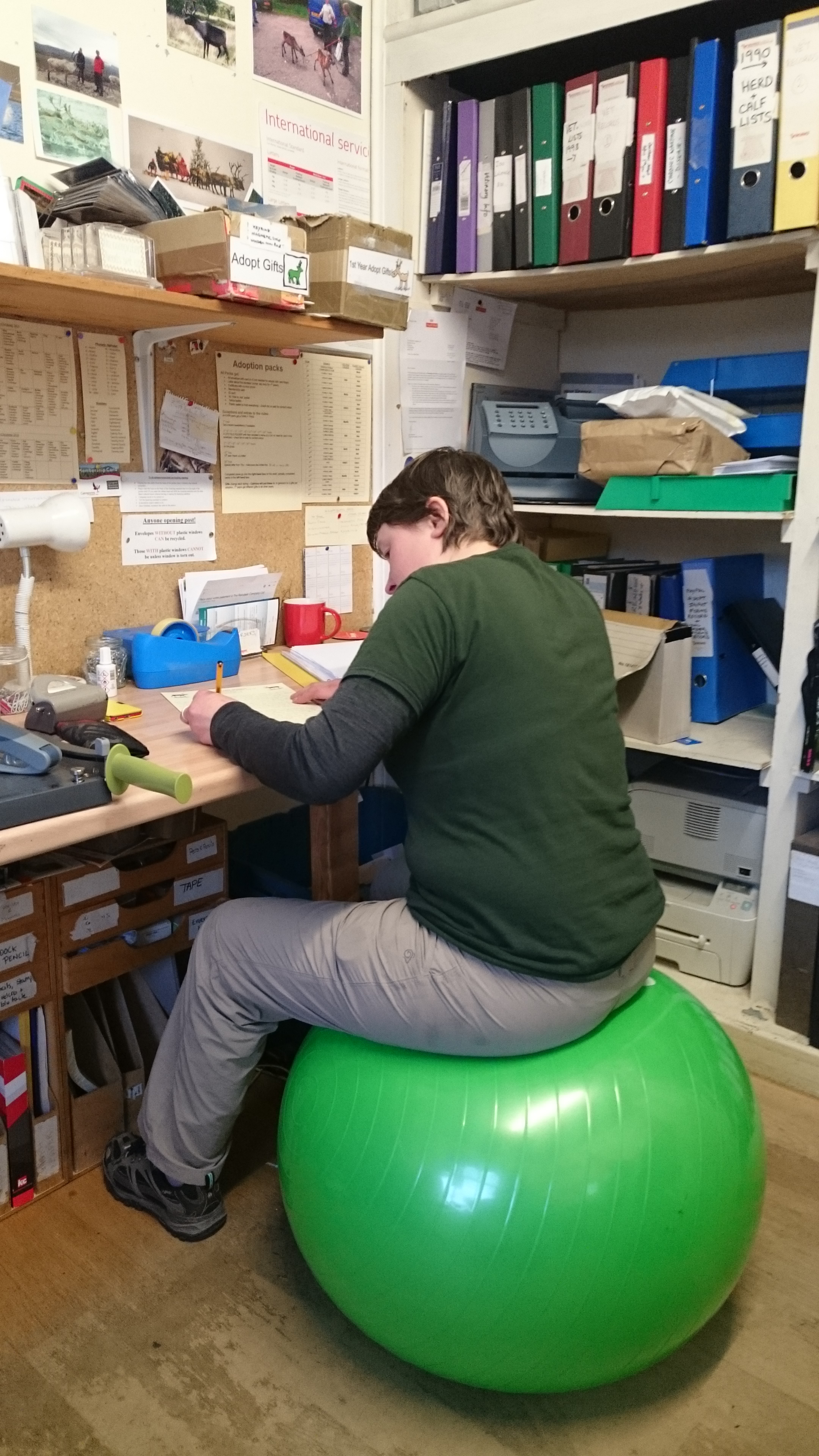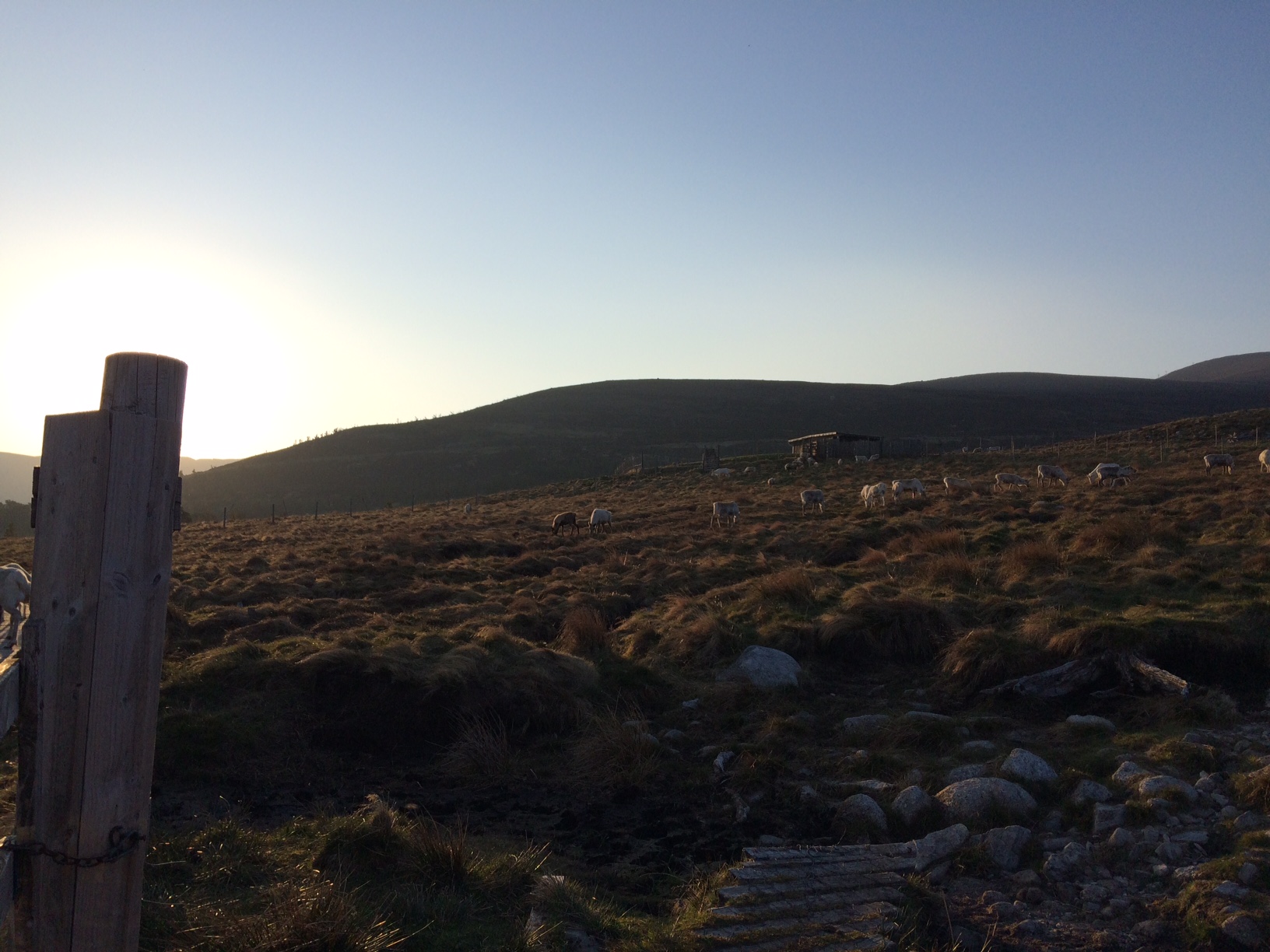Here’s the second part of Beth’s blog about volunteering with the reindeer over the years, and what it means to her. The first part can be found here.
One of the earliest memories I have of volunteering up in Aviemore is being sat in the back of the van in the summer with a small calf between my legs we were bringing back down the hillside for the evening (Editor’s note – this was a hand-reared reindeer calf who was at this point spending his nights in the paddocks beside the Reindeer Centre, and his days up on the mountain with the main herd in the enclosure. We don’t routinely transport reindeer up and down the hill in the back of our van!!!). He was so small, but I remember walking him down the hillside and when we got in the van he laid his head on my lap. It’s such a small thing but it meant so much. These amazing animals and I was lucky enough to be able to help and look after them!

When I say the Cairngorm Reindeer Herd have a lot to answer for, I mean it. When I turned 16 I landed myself a job at Stockeld Park, near my home in Yorkshire, which is one of the many locations the Cairngorm reindeer have a reindeer parade at Christmas time. It is because of the reindeer that I got myself the job. A few years prior to getting the job one of the managers told my dad that when I was of the age to be able to work I was to fill an application out and they’d have me working on their team like a shot. And so I did. 21st May 2015 I was at Stockeld Park picking my uniform up. On my first shift there a few weeks later I walked into the shop where I would be working and a poster was behind the counter with my face on it from the previous Christmas event. I was known for a while as “reindeer girl” as most the staff first knew me for helping out at the Christmas events! That name lasted with me till I left a few years later.
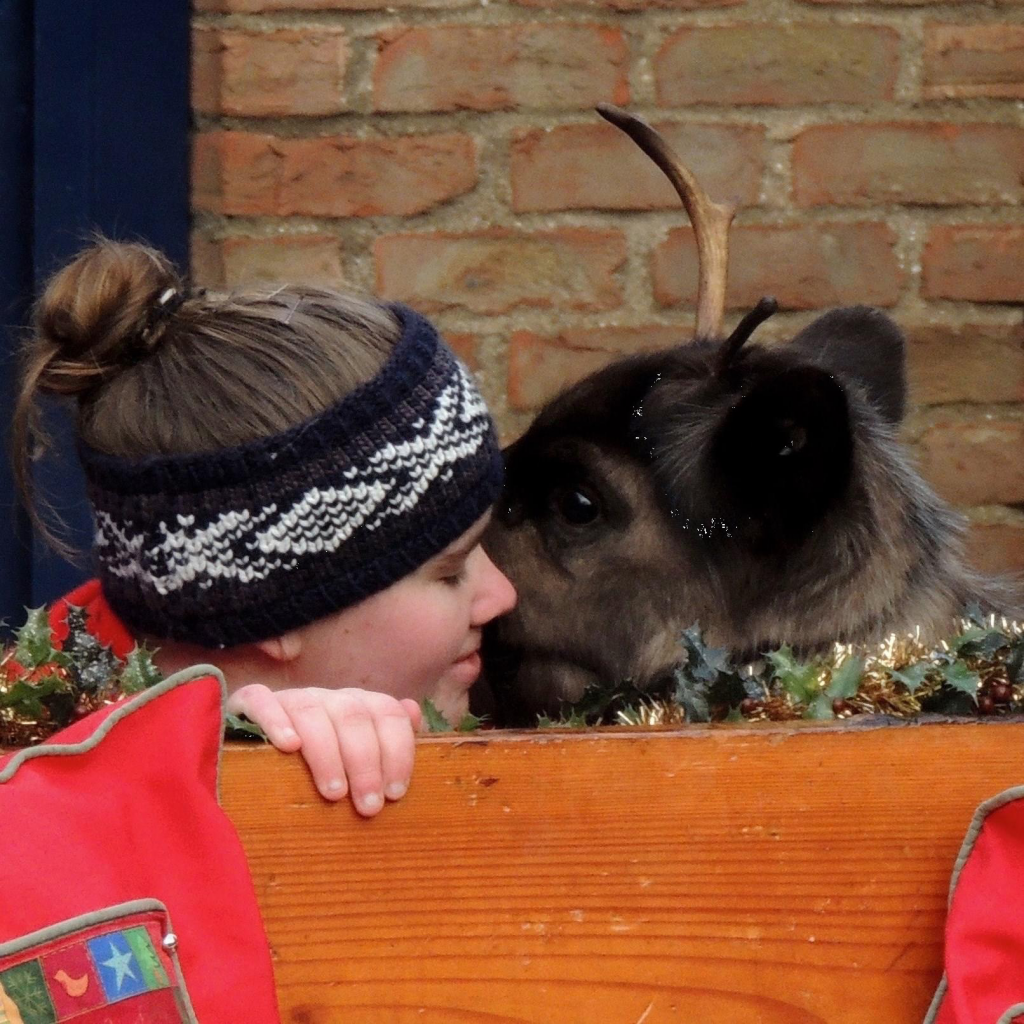
I could go on and on about the memories I have made volunteering. But I won’t bore you all! Just two more memories that have given me so much happiness -one of them I was able to bring experience from my care work background into the day I spent with a family doing a half-day reindeer trek (which doesn’t run any more). I can’t remember the year but I remember going out early on a hill trek with a family with a young boy. They had adopted a reindeer in the past and all were excited to do the hill trek. It was a glorious day. The sun was out and it was warm. The young boy had autism and was very shy at first. It took a while to encourage him to take the rope and lead the reindeer on the walk. When he did it was like talking to a new boy. He was full of smiles and was so happy. I remember after the trek a reindeer called Lego, who he had been leading, laid down in the long grass. I’d turned away to talk to some of the other people and when I turned to see the young boy he was laid down cuddled into Lego. It was an amazing thing to see. It was like seeing a boy and his dog. They were so peaceful and seemed in their own world, and it melted my heart and made my day to see this young boy so happy.
When I was in my second year of sixth form it was mandatory to do a week’s worth of work experience during the summer after. Most people in my class chose to go work in a coffee shop or wherever their parents worked. Nope. Not me. I hopped in the car (which gave my family an excuse for a weekend away) and got myself up to Aviemore. I stayed in the Youth Hostel a few minutes away from the Reindeer Centre. That week I cooked for myself (may have burnt a meal or two…), I went for plenty of walks nearby where I was and most importantly spent five days working alongside the staff at the Cairngorm Reindeer Centre. I loved every moment of it !

I can also remember the day we went up on the hill trip and me and Imogen who was working there at the time went hunting for Pokemon on the way back down the van on what used to be a big craze back then on the Pokemon Go app! That’s also the same day Hen had asked me to help check a reindeer’s temperature… another new experience I had never done before!
This was the week that I was pushed the most. I had so much fun and I was also tested on my knowledge of the reindeer. Fiona had mentioned to me on the first day that by the end of the week she was wanting me to lead a hill trip from start to finish. Now I panicked. But eventually, on my last day, I took a small group of visitors up to see the reindeer. After I had done that I was so proud of myself. I have never had the most confidence. In school I would shy away, wouldn’t even put my hand up to ask a question to the teacher. But whenever someone asked me to stand up and talk about reindeer, it was like I was a new person. I could give a speech on the information I knew and then would be able to answer questions people had to ask. I will never be more grateful to a bunch of people then I am to those I have worked with at the
Cairngorm Reindeer Centre. They have helped me come so far in life and are part of the reason who I am today.
Getting back on topic, that same week I helped out in the office, cleaned the paddocks, cleaned the visitors centre, helped in the shop and on my evenings I spent a lot of them walking and being at one with the beautiful area Glenmore is. I can remember on one of the nights Fiona had invited us to join in with their “Come dine with me” evening. That day me and another volunteer, Blyth, had helped prep some of the food they would be cooking that night. It was just lovely. I felt so involved and learnt so many skills that week. I remember sitting on the train and not wanting to go home.
I have also helped at a fair few Christmas events, mainly Stockeld Park and Beverley. Beverley by far has to be my favourite. It’s so busy and feels so festive. I used to love answering questions people had and talking to the children about Christmas and the magic of the reindeer. I remember one year helping harness the reindeer ready for the event and one of the reindeer lifted his head and bashed his antlers in to my head, bad timing on someone’s behalf and the next day I remember going to school the next day with a bruise going
from the top of my head down to my chin on the left hand side… it was bragging rights and gave me an excuse to chat all about the reindeer event!

Now I feel I have gone on long enough. And it’s time to wrap up this journey I have brought you on and the memories I have shared. I have met some amazing friends over the past 19 years. Who would’ve thought one reindeer called Biscuit could have brought us a friendship with a lovely lady called Carola who lives over in Holland, and from there many friendships grew. We then found more “reindeer crazy” people like us and started a Reindeer Groupies Page” on Facebook. We’ve had many meetings through the years and have made many memories. I will forever be grateful to everyone up at Reindeer House. You all hold a special place in my heart and I so hope that in October 2020 I will be back up, starting a new chapter of memories by bringing my partner and his daughter up to see the reindeer and hopefully sharing the magic and love I have in my heart with them for these lovely creatures.
Beth









